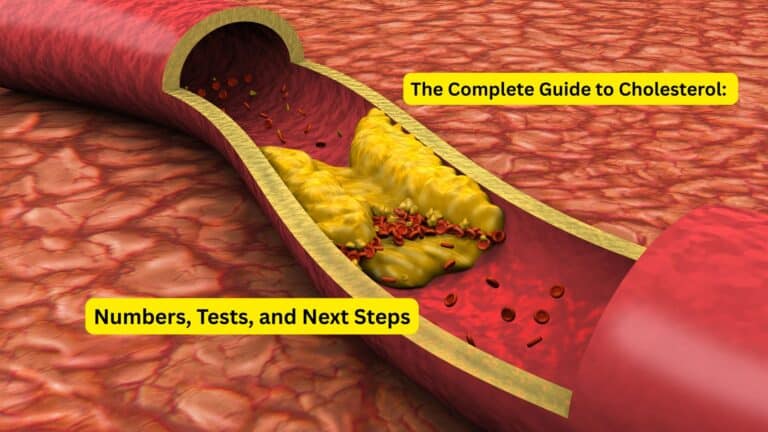An allergy-safe kitchen is a carefully organized environment designed to prevent the transfer of allergens from one food item to another during preparation, cooking, and storage. For individuals managing food allergies, even trace amounts of allergens can trigger severe reactions, making cross-contamination prevention a critical safety measure. Understanding and implementing proper protocols for tools, cleaning, food preparation, storage, and training creates a protective barrier against accidental exposure and provides peace of mind for those navigating daily meal preparation.
What Is Cross-Contamination?
Cross-contamination occurs when allergens are unintentionally transferred from one food, surface, utensil, or hand to another, potentially causing allergic reactions in sensitive individuals. This transfer can happen through various pathways, including using the same cutting board for allergen-containing and allergen-free foods, stirring different dishes with the same spoon, or handling peanuts and then touching other ingredients without proper hand washing. Even microscopic amounts of allergens can be problematic for those with severe sensitivities, making awareness of these transfer mechanisms essential for kitchen safety.
Common Cross-Contamination Scenarios
Cross-contamination frequently occurs through shared cooking surfaces, utensils that haven’t been properly cleaned between uses, and airborne particles from grinding or chopping allergenic foods. Oil used for frying multiple food items can carry allergens from one batch to another, while condiments like butter or jam can become contaminated when the same knife spreads both allergen-containing and allergen-free items. Understanding these scenarios helps identify potential risk points in your kitchen routine.
Step 1: Designate Tools and Surfaces
Creating physical separation between allergen-containing and allergen-free food preparation requires dedicated equipment and surfaces. Color-coding kitchen tools helps prevent mistakes and ensures that designated items remain exclusively for safe food preparation. This systematic approach removes guesswork from meal preparation and reduces the likelihood of accidental cross-contact.
Essential Designated Equipment
Invest in separate cutting boards, knives, wooden spoons, mixing bowls, and baking sheets specifically for allergen-free cooking. Consider purchasing these items in distinctive colors or adding permanent labels to make identification immediate and foolproof. Storage containers, colanders, and even dish towels should be designated to maintain separation throughout the entire food handling process.
Surface Management Strategies
Designate specific counter areas for allergen-free food preparation, or ensure thorough cleaning and sanitization between different food preparations. Some families find success in creating an “allergy-safe zone” within their kitchen, complete with dedicated storage for tools and ingredients. This approach provides a reliable space where cross-contamination risks are minimized through consistent practices and clear boundaries.
Step 2: Master Cleaning Protocols
Effective cleaning protocols form the foundation of cross-contamination prevention, requiring a systematic approach that goes beyond basic washing. Thorough cleaning involves washing surfaces and utensils with warm, soapy water, rinsing completely, sanitizing, and air drying to eliminate allergen residue that could trigger reactions. The sequence matters as much as the thoroughness, with each step building upon the previous to ensure complete allergen removal.
The Four-Step Cleaning Process
Begin with washing all surfaces and utensils in hot, soapy water for at least 20 seconds, paying attention to crevices and textured surfaces where allergens can hide. Rinse thoroughly with clean water to remove soap and loosened allergen particles, then apply an appropriate sanitizer and allow proper contact time. Finally, air dry or use clean towels designated specifically for allergen-free items to prevent recontamination during the drying process.
Validated Cleaning Methods
Recent studies emphasize the importance of cleaning protocols validated through allergen residue testing to ensure effectiveness. Standard household dish soap effectively removes most food allergens when used with adequate scrubbing and rinsing, while some commercial sanitizers provide additional peace of mind. However, avoid relying solely on sanitizers without proper washing, as they cannot penetrate food residues that may harbor allergens.
Step 3: Practice Strict Hand Hygiene
Hand hygiene serves as a critical control point in preventing allergen transfer, as hands frequently move between different foods and surfaces during meal preparation. Soap and water washing proves more effective than sanitizer for removing food allergens, making proper handwashing technique essential for kitchen safety. Frequent hand washing throughout meal preparation, especially after handling known allergens, creates multiple opportunities to break the contamination chain.
Proper Handwashing Technique
Wash hands with warm water and soap for at least 20 seconds, scrubbing between fingers, under nails, and up to the wrists. Focus on areas where allergen particles commonly accumulate, such as around rings or under fingernails. Rinse thoroughly and dry with clean towels, ideally designated for hand drying in the allergy-safe kitchen area.
Strategic Washing Timing
Implement hand washing at key points throughout meal preparation: before starting to cook, after handling any allergenic ingredients, before touching allergen-free foods, and after completing meal preparation. This strategic approach ensures that hands don’t become vehicles for allergen transfer between different stages of cooking.
Step 4: Plan and Sequence Food Preparation
Strategic meal planning and preparation sequencing significantly reduces cross-contamination opportunities by controlling when and how different foods encounter shared surfaces and equipment. Preparing allergen-free meals first and serving them separately prevents accidental contact during cooking and serving phases. This approach treats allergen-free cooking as the priority, ensuring the safest possible environment before introducing potential contaminants.
Meal Preparation Sequencing
Start with allergen-free ingredients and complete all safe dishes before handling any allergenic foods. This sequencing means that surfaces, tools, and the cook’s hands are at their cleanest state when preparing the most critical items. If preparing both types of food is necessary, create clear breaks between preparations, with thorough cleaning protocols implemented between each phase.
Serving and Storage Considerations
Maintain separation through the serving process by using designated serving utensils and keeping allergen-free dishes covered and separate from other foods. Consider the placement of dishes on tables or buffets, ensuring that serving spoons don’t accidentally touch the wrong foods and that allergen-free items are served first to prevent contamination from other dishes.
Step 5: Safe Food Storage and Labeling
Proper storage and labeling systems extend cross-contamination prevention beyond active cooking periods, protecting allergen-free foods during storage and helping family members identify safe options. Segregating allergenic foods in cabinets and refrigerators with clear, labeled containers reduces the risk of mix-ups and accidental exposure. These organizational systems become particularly crucial in busy households where multiple people access food storage areas.
Storage Hierarchy and Placement
Store allergen-free foods on upper shelves in both refrigerators and pantries to prevent contamination from spills or crumbs falling from allergenic foods stored above. Use airtight containers to protect allergen-free items from airborne particles and cross-contact during storage. Consider dedicating specific areas of refrigerators and freezers exclusively to allergen-free foods.
Labeling Systems That Work
Implement clear labeling that identifies both allergen-free foods and items containing specific allergens. Use waterproof labels for refrigerated items and ensure that all family members understand the labeling system. Some families find success with simple symbols or colors that transcend reading ability, making the system accessible to children or visitors who might not be familiar with specific allergen names.
Step 6: Train Everyone Involved
Comprehensive training for all household members and food handlers ensures that allergy-safe practices remain consistent regardless of who is cooking or serving food. Education programs improve safety and reduce allergic reactions by creating shared understanding and responsibility for maintaining safe practices. This collective approach prevents well-meaning family members or guests from inadvertently compromising kitchen safety through unfamiliarity with protocols.
Household Education Strategies
Conduct regular family meetings to review allergy safety protocols, practice proper cleaning techniques, and discuss any updates to the household’s food allergy management plan. Create visual reminders like posted cleaning procedures or color-coding guides that reinforce training and serve as quick references during meal preparation. Ensure that all household members understand both the “how” and “why” of each safety measure.
Emergency Preparedness Training
Train all household members to recognize allergic reaction symptoms and respond appropriately, including when to administer epinephrine and how to contact emergency services. Establish clear communication protocols for reporting potential cross-contamination incidents and ensure that emergency medications are easily accessible and up-to-date. Regular practice of emergency procedures helps maintain readiness and confidence in crisis situations.
If Cross-Contamination Happens
Despite best efforts, cross-contamination incidents may occur, requiring immediate and decisive action to prevent allergic reactions. When contamination is suspected or confirmed, the entire affected food item must be discarded and remade from scratch, as removing visible allergen pieces or washing contaminated areas cannot eliminate microscopic allergen residues. This conservative approach prioritizes safety over convenience and prevents potentially dangerous exposure to allergen-sensitive individuals.
Immediate Response Steps
Stop food preparation immediately when contamination is suspected, clearly mark or remove the contaminated food to prevent accidental consumption, and assess what surfaces, tools, or other foods may have been affected. Begin comprehensive cleaning protocols for all potentially contaminated areas and tools before resuming any food preparation activities.
Recovery and Prevention
After addressing immediate contamination, review how the incident occurred and adjust protocols to prevent similar situations in the future. Document the incident, including contributing factors and lessons learned, to improve future prevention efforts. Use these experiences as teaching moments for all household members about the importance of vigilance and protocol adherence.
FAQs
What is cross-contamination in the kitchen?
Cross-contamination is the unintentional transfer of allergens from one food, utensil, or surface to another, which can cause allergic reactions in sensitive individuals even when the contamination is microscopic or invisible.
How do I prevent cross-contact?
Prevent cross-contact by using separate cooking tools for allergen-free foods, cleaning thoroughly between preparations, preparing safe foods first, maintaining good hand hygiene, and storing allergen-free items separately from allergenic foods.
Should utensils be color-coded?
Yes, color-coding utensils and equipment designated for allergen-free use helps prevent mistakes and ensures immediate identification of safe tools during meal preparation, reducing the likelihood of accidental cross-contamination.
Is sanitizer enough to clean allergens off hands?
No, soap and water washing is necessary for effective allergen removal from hands. Sanitizers cannot adequately remove food proteins that cause allergic reactions, making thorough handwashing with soap the preferred method.
What to do if contamination occurs?
If contamination occurs, discard the entire contaminated food item and remake it from scratch. Do not attempt to remove visible allergen pieces or wash contaminated areas, as microscopic residues can still trigger allergic reactions.
Conclusion
Creating and maintaining an allergy-safe kitchen requires dedication to systematic approaches encompassing designated tools, thorough cleaning protocols, strategic food preparation, proper storage, and comprehensive training for everyone involved. These steps work together to create multiple layers of protection against cross-contamination, significantly reducing the risk of accidental allergen exposure. With consistent implementation, these practices become second nature, providing confidence and security in daily meal preparation.
The vigilance required for allergy-safe cooking pays dividends in safety and peace of mind, allowing individuals and families to enjoy meals without constant worry about allergic reactions. Regular assessment and adjustment of these protocols ensures they remain effective as household needs and circumstances change.
For those managing food allergies, consider complementing these kitchen safety practices with regular allergy testing through Walk-In Lab to monitor sensitivity levels and stay informed about your body’s responses to potential allergens. This comprehensive approach to allergy management combines practical prevention with scientific monitoring for optimal safety and health outcomes.
Disclaimer: This article is for informational purposes only and is not intended as medical advice. Always consult with healthcare professionals for personalized medical guidance regarding food allergies and allergy management.






